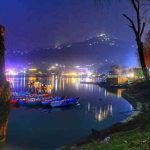Physical Address
304 North Cardinal St.
Dorchester Center, MA 02124

Mount Makalu, the fifth highest mountain in the world, stands as a awesome and majestic peak in the Himalayas. With an elevation of 8,485 meters (27,838 feet), Makalu is known for its distinctive pyramid shape and steep, challenging slopes. Located in the Mahalangur range, southeast of Mount Everest, Makalu straddles the border between Nepal and Tibet. We search into the fascinating aspects of Mount Makalu, including its geography, history, climbing routes, and the unique challenges it presents to mountaineers.
Mount Makalu, also known as the “Great Black” due to its dark, rugged appearance, is a prominent peak in the Himalayas. It is the only peak among the world’s 14 highest mountains that has a perfect pyramid structure. Makalu’s striking shape and the steep faces make it one of the most challenging mountains to climb. The mountain is part of the Makalu–Barun National Park, a protected area known for its rich biodiversity and stunning landscapes.
Makalu is located in the northeastern part of Nepal, in the Mahalangur range of the Himalayas. The mountain lies approximately 19 kilometers (12 miles) southeast of Mount Everest, making it a part of the same geological complex. The peak is characterized by its sharp edges, ridges, and a prominent double summit, with the main summit standing at 8,485 meters and the subsidiary summit, known as Makalu II, at 7,678 meters.
The first successful ascent of Mount Makalu was accomplished by a French expedition led by Jean Franco on May 15, 1955. This expedition was remarkable not only for its success in reaching the summit but also because it achieved the rare feat of having all members of the team reach the top. The French climbers, Lionel Terray and Jean Couzy, were the first to summit, followed by the rest of the team in the days that followed.
Makalu is considered one of the most technically challenging mountains to climb, primarily due to its steep pitches and knife-edge ridges. The most commonly used route to the summit is the Northwest Ridge, which involves a complex mix of rock, ice, and snow climbing. Another route, the Southeast Ridge, is known for its steepness and technical difficulties.
The region surrounding Mount Makalu is rich in biodiversity, protected under the Makalu-Barun National Park and Conservation Area. The lower altitudes of the park are cover with lush forests of rhododendron, fir, birch, and juniper, providing habitat for a variety of wildlife. As you ascend, the vegetation becomes sparser, giving way to alpine meadows and eventually to bare rock and ice.
The park is home to several rare and endangered species, including the snow leopard, red panda, Himalayan black bear, and the elusive musk deer.
Birdwatchers can also spot species like the Himalayan monal, blood pheasant, and various raptors.
The region around Mount Makalu is inhabited by ethnic groups such as the Rai, Sherpa, and Tibetan communities, each with their own distinct cultures and traditions. The Sherpa people, in particular, are renowned for their mountaineering skills and play a crucial role in supporting expeditions on Makalu. The local communities have deep spiritual connections to the mountains, often considering them sacred and home to god and goddess.
Pre-monsoon (spring) and post-monsoon (autumn): The ideal time to attempt a climb on Mount Makalu is during the seasons. These periods offer more stable weather conditions, with clearer skies and milder temperatures.
Spring (April to May): It is particularly favored by climbers due to the longer daylight hours and relatively stable weather patterns.
For those not seeking the extreme challenge of summiting Makalu, the region offers a range of trekking opportunities. The Makalu Base Camp Trek is a popular route that takes trekkers through diverse landscapes, from lush subtropical forests to alpine meadows, and offers stunning views of Makalu and other surrounding peaks.
The Makalu-Barun National Park and Conservation Area is a testament to Nepal’s commitment to preserving its natural heritage. Efforts are underway to protect the unique ecosystems of the region from the impacts of climate change, deforestation, and tourism. The park authorities, along with local and international conservation organizations, are working on initiatives such as habitat restoration, wildlife protection, and sustainable tourism practices.
Whether you’re planning to climb Mount Makalu or jump on a trek in the region, thorough preparation is essential. Here are some tips to ensure a safe and enjoyable journey:
Mount Makalu, with its towering presence and challenging land, is a true gem of the Himalayas. Whether you are a seasoned climber looking to tackle its formidable slopes or a trekking lover to explore its rich biodiversity and stunning landscapes. Makalu offers a unique and rewarding experience. By respecting the mountain and its surrounding environment, and embracing the local culture, visitors can ensure that the legacy of Mount Makalu continues to inspire and admire for generations to come.



